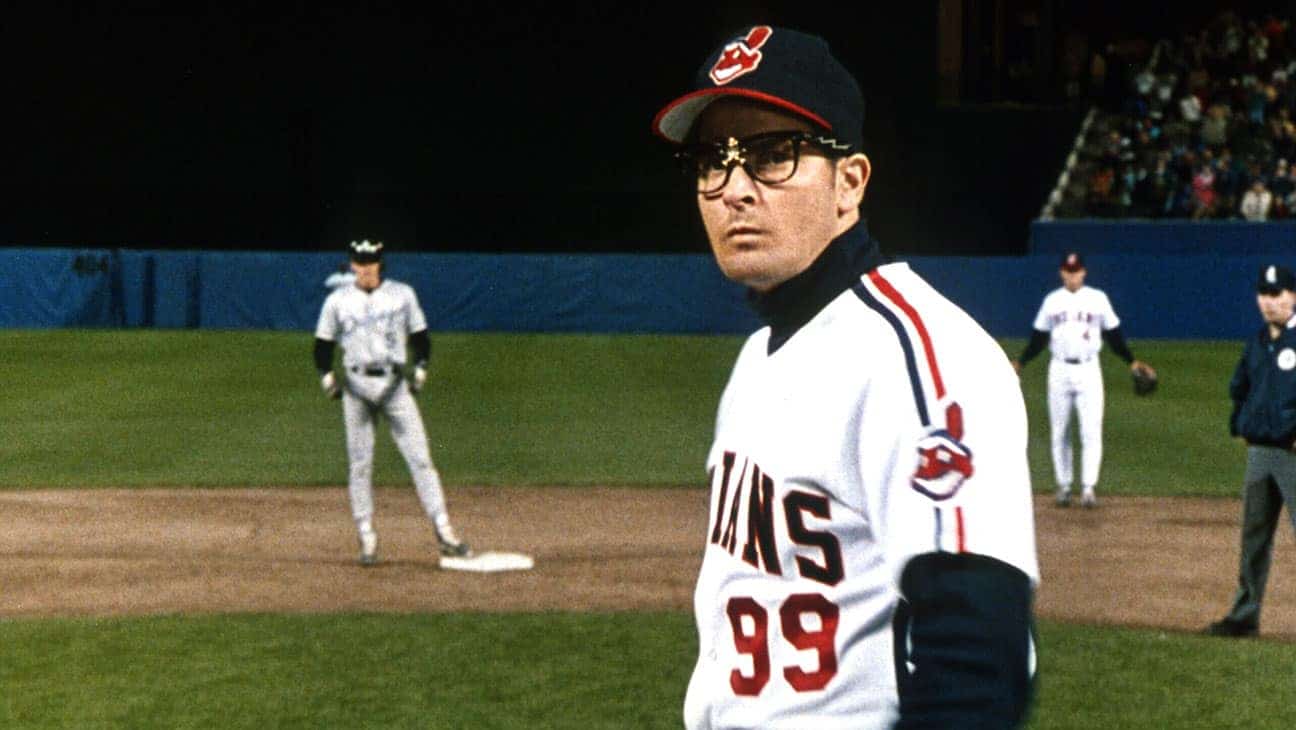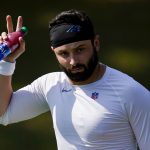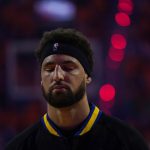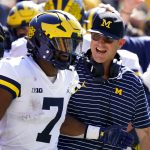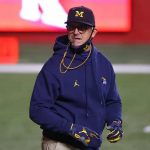There’s a reason that sports are a go-to safe space for storytellers in Hollywood. Sports offer an easy to understand modern platform on which to set eternal tales of human struggle, togetherness, triumph, defeat, and even one athlete’s galaxy saving victory over the forces of cartoon spirit-stealing aliens. From plucky underdogs to the dramatic depiction of famed real-life sports heroes to those obnoxious cocky rich kids from across town with their fancy uniforms, anyone can find something to root for or against in a good sports flick.
A well-done sports movie will find the important balance between how much focus is on the field and how much is spent with the characters in other settings. Without getting to know who these people are, it becomes very difficult to root for them during the action scenes, but if there’s not enough game-time depicted you don’t have a sports movie at all. The other primary ingredient in any good sports movie is the Big Play.
Anyone who has played organized sports can recognize a Big Play about to happen… you’re dropping back on defense, five seconds left on the clock, your team is up by 1, the opposing team’s point guard just turned into a basketball playing werewolf… some crazy stuff is about to go down on this court.
The big play can come at any point in the movie, but it’s typically in the championship game, or whatever form the climax takes. Big plays are noteworthy because of the required creativity and practice, or what must amount to Domino from Deadpool level luck. We’re here to find some of the most extreme examples of these unlikely, amazing, sometimes chill inducing plays…
The Squeeze with a Twist
Major League is both one of the best sports movies of all time and one of the best comedies of the 80s. Released in 1988, the R-rated comedy has barely aged, and could drop seamlessly into today’s baseball and comedy landscape. With the possible exception of The Duke, who famously “threw at his own kid during a charity softball game,” which we’re pretty sure would be considered so evil in 2020 that we would skip the trial entirely, and just shoot you directly into space if you tried it. In the 80s it was just good parenting, kid’s gotta learn to duck somewhere.
The movie is a traditional underdog story, much like another classic, The Bad News Bears in its basic DNA, only replacing racist 1970s tweens with adult ballplayers. The owner of the Cleveland Indians has died, leaving the franchise to his trophy wife, the vicious vindictive voluptuous Rachel Phelps. Rachel has no attachments to the team or the town. With her eyes only on money, she immediately hatches a plan to sign the worst players she can find, in the hopes of driving attendance so low she can execute a clause in the team’s contract that would allow them to relocate the Miami, helping to concentrate some of the world’s most problematic sports logos in one state.
As you’re probably expecting, and really should have already seen by now, the ragtag bunch ends up exceeding expectations, coming together around a common bonding experience – in some cases this is a tragedy like a key player’s paralysis, in Major League this takes the form of a semi-nude cutout of the team’s owner that is slowly revealed for each win… maybe more things than The Duke aged poorly after all… – and going on a late season win streak to force a one—game playoff against their arch-rival New York Yankees, winner moves on to the ALCS, this was still pre-Division Championship, let alone Wildcard days.
I’ll admit, as a Yankees fan, the climactic game is a bit challenging. Sure, I want the Indians to win, and yes, I understand why the Yankees are the bad guys in this reality. Unfortunately, those are the same reasons that the Yankees are the bad guys in actual reality, and I root for them anyway. I would absolutely root for the Duke and Clew Haywood in pinstripes in real life. American League saves leader and a Triple Crown winner? Sign me up! Anyway, the lousy Indians go on to use some movie magic to steal the game from the beloved Yankees when…
“What’s this… he’s calling his shot?!” Beleaguered veteran catcher Jake Taylor is at the plate, facing The Duke. He takes his bat and points to the left field stands. “Nobody’s done this since Babe Ruth in the ‘32 World Series!” as Harry Doyle tells us. The Duke immediately knocks him down with a 98-mph heater aimed at the chin. Taylor gets back up, refuses to dust himself off, points again at he left field seats. The Cleveland fans are in a frenzy. Stomping. Clapping. Cheering. In the stands. In bars across the state. “Join in wherever you are out there, let’s hear ya Cleveland!” it’s a great moment. And Taylor bunts!
A swinging bunt up the third baseline, more specifically. Which is part of what makes this play so unlikely. Even though the New York third baseman was playing back, having fallen for Taylor’s called shot ploy, the entire movie had focused on Taylor’s age and ailing knees. There’s just no way he would have beaten the throw. And yet, the grizzled old catcher sprints toward first, digging as hard as he can for the bag. Knees gone years before he’d joined “the Mexican League” (did we say, no problems?). Taylor’s moment defines “leaving it all on the field” as he collapses across the first base bag, somehow just beating the throw.
Cleveland speedster Willie “Mays” Hayes was rounding 3rd before Taylor’s bunt was even fielded, never thinking anything but scoring the run there and then. The first baseman notices Hayes, wheels, fires to the plate, where Hayes beats the tag with the most perfectly executed hook-slide in baseball history.
“The Indians win it! The Indians win it! Oh my god, the Indians win it!” while owing a debt to the famous “Giants win the pennant!” call, is still one of the best moments of sports announcing in either fiction or reality.
The Crane Kick
“Daniel LaRusso’s gonna fight? Daniel LaRusso’s gonna fight!” with those eight words, the story of the 1984 All-Valley Karate Tournament was changed forever. Presumptive champion Johnny Lawrence, star athlete of the Cobra Kai dojo would be forced to fight one more time. Upstart challenger Daniel, a newly transplanted kid from Jersey who had only recently taken up karate had miraculously overcome what looked a lot like torn knee ligaments about 15 minutes earlier and was ready for the championship round.
We can debate who deserved to win the final fight in The Karate Kid (it’s Johnny, Daniel is a dick), but there’s no debating who should have won this fight. Johnny had dedicated years to honing his karate, working with the best instructor and training against the best opponents. Daniel had a few moves he’d poorly interpreted from a book and whatever a few afternoons of household chores can teach you about martial arts. Add to this the fact that Daniel’s overcoming his shredded knee was entirely due to his trainer, only friend, and maintenance man, Mr. Miyagi, giving him a rubdown that may or may not have involved actual magic, but definitely led directly to the happy ending.
Daniel limps to the ring, barely able to put any weight on his left leg. A few points are exchanged, but Johnny is clearly demonstrating ring dominance. At 2-2 Johnny pushes a limping Daniel around the ring, Daniel counters with a few moves but leaves himself open to a vicious right hand to the face that floors him. As Daniel gathers himself and gets back up, the ref informs us that there was no point awarded for the blow to the face. This even though moments earlier Daniel had been awarded a point for punching Johnny in the back of the head while his face was already against the mat following a takedown. The rules of this tournament seem a bit flexible for the protagonist is all I’m saying.
The action begins again, Johnny takes advantage of catching Daniel’s left leg after a feeble kick attempt, bringing his elbow down on the joint, and causing Daniel to collapse in pain. Apparently, this is also not worth a point. Karate scoring is weird. Daniel manages to rise heroically and toe the line again. Daniel, remembering a move he had spent twenty minutes practicing on the beach a week before, raises his left leg, knee bent, waiting. The ref counts down the action. Johnny charges. Daniel leaps off his right leg and kicks Johnny directly in the face with his left foot. Scoring a point, winning the match. With a blow to the face. I’ve seen this movie probably fifty times in my life and I still have no idea how this is a legal move, given the scoring that had come before it. Maybe the ref just wanted to go home? Maybe he had a ton of money on Daniel? It makes no sense, but the scoring is so arbitrary I wonder why they bothered with referee at all.
Steve Nebraska’s Playoff Game
“I found him! I found Kong!” exclaims Albert Brooks’ character, baseball scout Al Percolo, upon discovering uber-prospect Steve Nebraska in 1994’s The Scout. At the time, Nebraska was living in relative anonymity, despite being the most famous player in a league in Mexico that featured another team with a donkey playing third base. Steve amazes the titular scout with his incredible talents as both a pitcher and a tremendous power hitter, striking out every batter he faces from the mound, and mashing home runs from both sides of the plate.
We meet Steve over lunch and his seemingly quirky personality is revealed as he makes a mask out of a tortilla and demonstrates other symptoms of ADHD. This doesn’t phase Al in the slightest, despite the fact that another client’s personality quirks were the exact reason he’d been banished to Mexico by Yankees management in the first place, after his previous signing vomited on the mound, sprinted from the field, stripped off his uniform, and ran down the Major Deegan Highway through the Bronx.
Yankees management doesn’t take Al seriously, firing him instead of signing Steve, making the potential superstar a free agent. Back in New York, Al arranges for an audition against baseball luminaries Brett Saberhagen and Keith Hernandez, both of whom stop to ask Al about when they’re going to be paid. After demonstrating his prodigious skills all the teams submit bids for Steve’s services, with the Yankees coming away the big winners. But there’s a catch, not wanting to impact the season already in progress, Steve doesn’t want to play until the following year. A reporter asks if Steve would pitch in the playoffs, were the Yankees to make it and, this being 1994, Al finds this so hilarious a premise that he responds that Steve will pitch the first game in that unlikely scenario.
Naturally, the anonymous Yankees go on a run in the background of the movie, while we spend most of our time with Al and Steve, and an amusing journey into Steve’s fragile psyche. It seems that Steve had some issues growing up, ultimately leading to a showdown between him and Al on the roof of Yankee Stadium, Steve in full uniform, immediately before Game 1 of the playoffs. After eventually deciding to pitch, Steve is flown to the field in the helicopter of Yankees owner George Steinbrenner – gamely playing himself – and takes the mound. While what follows is technically not just one play, it might as well be. It can only be described as the greatest pitching performance of all time, in that it literally cannot be topped. The perfect perfect game. As announcer Bob Costas calls it, “27 up, 27 down, 81 pitches all of them strikes!” Meaning that Steve struck out every batter he faced on exactly three pitches, over a full nine innings. He didn’t miss the strike zone once. He didn’t get a bad call from the ump. Didn’t yield even so much as a foul ball. No Yankee made contact the entire game. This makes Steve so absurdly good that the only reasonable comp for his pitching skills would be Bugs Bunny’s ability to induce three swinging strikes on a single pitch.
The Annexation of Puerto Rico
The climactic play in the classic kid’s football movie Little Giants is really two different plays. “The Annexation of Puerto Rico” is explained earlier in the movie as a double-fake handoff leading to a long pass to a hopefully open running back on something resembling a wheel route. The play the Giants end up running at the end of the movie is a wildly different one, known as the “Fumblerooski.” It remains unclear if they had redesigned the play, or if the Giants merely got the call wrong, ragtag bunch that they were.
Assembled by Rick Moranis’ Danny O’Shea, the Giants are made up almost entirely of outcasts from the town’s main team, the Cowboys, coached by Danny’s Heisman Trophy winning older brother Kevin. The team features the classic kid’s movie lineup, a tiny nerdy kid, a chubby flatulent kid, and even – gasp – A GIRL!
Through several machinations, the stakes of the big game end up not only being which team gets to represent the town, but also Kevin’s car dealership against Danny’s gas station. No pressure, kids. The day before the big game, the Giants are paid a visit by several real-life hall of fame NFL players who inspire them to believe in themselves.
Naturally, the next afternoon the Cowboys go up big early in the game, leading 21-0 at the half. The Giants mount a tremendous comeback in the second half. After tying the game at twenty-one, they get the ball back following a game-saving tackle at their own one yard line by Becky “the Icebox” O’Shea, who had only just decided to rejoin the team at halftime, having quit earlier in the movie to become a cheerleader in order to impress the starting quarterback, Junior. There’s a lot going on in this flick.
The Giants have four seconds to go ninety-nine yards and win the game. They call in the Annexation of Puerto Rico but run the Fumblerooski. If you’re not familiar, the play involves a massive fake in which the quarterback takes the snap but subtly leaves the ball on the ground, while turning and executing a fake handoff to a running back, hopefully drawing the defenders to one side of the field. The ball is then picked up by a lineman who runs it downfield. It sounds like movie magic, but this play has actually been run in the real world, most notably by Tom Osborne’s number 1 ranked Nebraska Cornhuskers in the 1984 Orange Bowl. The play is now considered illegal in the NCAA, and versions in which the ball is placed or fumbled forward have always been illegal in the NFL. You’ve much more likely seen it as the final big play of several different football movies, including Adam Sandler’s remake of The Longest Yard.
The idea that the play works is not what makes it so unlikely, in short yardage situations it can be somewhat effective. The idea that the Giants call the play from their own 1-yard line, and what happens next is what makes it a miracle play. Designed for the ball to end up in the hands of a lineman, typically not the fastest guy on the team, the Giants version of the play takes this to the extreme, giving the ball to Rudy “The Gas Man” Zolteck, known more for his flatulence than his speed. Rudy gamely makes it about 40 yards before the Cowboys catch up, forcing him to fling a desperate lateral over his head to Junior, who then laterals to the tiniest member of the Giants, who takes it across the goal-line for the game winning TD, before running into the goal post and knocking himself unconscious. The Giants win, the teams merge, the brothers reconcile, Becky and Junior get together, so does her Dad with his Mom… did we mention there was a lot going on in this movie?
Anything involving an Air Bud, Angel in the Outfield, ghost, teen wolf, or other magical being
Let’s face it, there are plenty of examples of extremely unlikely plays in sports movies that feature magic or supernatural beings. Long dead ballplayers come back to play on a field Kevin Costner builds on his farm in Iowa, Michael Jordan stretches his arm the length of the court for a game winning dunk in Space Jam, actual heavenly angels and super-powered canines help underdog teams win their respective big games, Hollywood has no shortage of wildly miraculous supernatural plays to choose from. Also included in this category, a surprising number of Twelfth Night inspired gender-bending soccer movies, including Ladybugs and She’s the Man, in which no one notices the teenager obviously masquerading as the opposite gender in order to play.
The Big Kahuna Surfs the Humunga Kowabunga from Down Unda
Most of you probably haven’t seen this 1987 parody of 1950s “beach party” movies, starring the actual 50’s icons Annette Funicello and Frankie Avalon, which is entirely understandable, it’s really not that good. Calling it a sports movie is a pretty big stretch, but the climax involves a sporting event which features the least likely moments on film, so we’re squeezing it in.
The movie catches up with an aged “Big Kahuna” Frankie and his now-wife Annette living in the Midwest, yearning for days past, while he works at a car dealership and she runs their household, and they both deal with their disaffected son, Bobby. The trio eventually packs their bags for a trip to Hawaii, which involves a multi-day layover in California, somehow.
Frankie and Annette take the time to visit their daughter Sandi who they discover has been living on a pier at their old beach and dating a lifeguard, which kicks off the process of pulling the two of them back into their old lives. They reconnect with former flames, meet new arch-rivals, and eventually break up. Frankie is revealed to have developed a fear of surfing, following a tragic wipeout many years earlier when trying to surf a hundred-foot pan-Pacific wave known as the Humunga Kowabunga from Down Unda.
Just before the big third act showdown, Sandi’s surfer boyfriend is injured, and can’t defend the beach against the encroaching leather-clad Wave Runner gang. Was this a thing in California in the 80s? Were they supposed to be bikers who had taken to the sea? Eventually Frankie overcomes his fears and paddles out to take his wave. Just then clouds roll in, the wind picks up, and the waves get choppy. Annette and Frankie have seen this before, it’s the sudden return of the Humunga Kowabunga from Down Unda!
This time, Frankie masters the wave at the same time as he masters his fear. Dropping in with ease, catching a tube, hanging-ten and waving to the crowd, he pulls out all the old tricks. He surfs the massive wave with such ease that he even takes time to shave with a straight razor, work on his short game by chipping a few golf balls, and sign an autograph for a fan who swims out to briefly join him on the surfboard, in one of the most realistic surfing scenes ever caught on film. Eat your heart out Endless Summer.
🔥 Hot from Side Action 🔥
- Lala Anthony Blames Knicks for the ‘Demise of their Relationship’
- Ja Morant Being Linked to Singer Lotto’s Sister Brooklyn
- Rumor: Instagram Model ‘Ayyyejae’ Connected to Phoenix Suns Is Now Pregnant by NBA Player
- Rumor: Jalen Rose Spotted With New Girlfriend Angela Rye
- Spurs Josh Richardson is Dating Former America’s Next Top Model Runner-Up Tatiana Elizabeth

